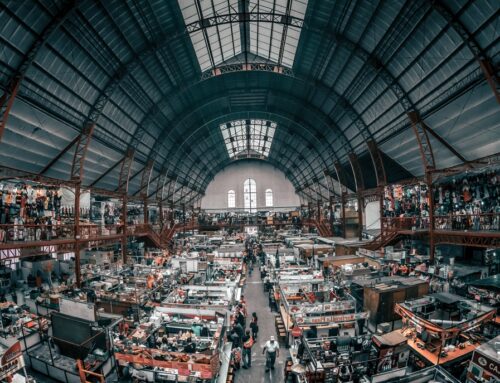“What the hell is going on? It’s winter.” These were the words uttered by many NSW Rural Fire Service crews as 80 bushfires ripped through the state this month. Drought has led to the worst winter bushfire conditions in a decade, and many fear worse is yet to come.
The words being uttered by many firefighters “what the hell is going on, it’s winter” footage of the #SaltAshFire as it moved towards the Tanilba Bay Golf Club on Saturday night by Dungog Rural Fire Brigade #NSWRFS 1:44 PM – Aug 20, 2018 · Sydney, New South Wales
Meanwhile, in the northern hemisphere, fires wreaked havoc as summer temperatures soared, leading many to claim global warming has changed our relationship with fire for good.
California has seen almost 500,000 hectares burn and 10 deaths this year – and it’s the second consecutive horror season.
Six of the 20 most destructive fires in the state took place this year or last.
Last month at least 11 fires raged within the Arctic Circle, with Sweden hardest hit. More than 90 people died as fire swept through Greece, and even UK residents were evacuated as crews struggled to contain a blaze on Saddleworth Moor, near Manchester.
As the climate continues to heat up, is this “world on fire” the new normal? And if so, what can we do about it?
Scientists stop short of blaming individual events on climate change – there have always been bushfires.
Writing on The Conversation website, Kevin Trenberth, a scientist at the US National Centre for Atmospheric Research, says it is the answer to the wrong question.
“Global warming does not cause wildfires,” he says, adding the source of ignition can usually be traced back to “human carelessness”, including dropped cigarette butts and unattended campfires, or natural sources such as “dry lightning”.
But, he says, global warming raises the risk of wildfire, and increases the impact.
“We can say it is highly likely that [the fires] would not have had such extreme impacts without global warming.”
Atmospheric scientist at Pennsylvania State University Michael Mann agrees.
“We’re not saying climate change is literally causing the events to occur,” he says. “What we can conclude with a great deal of confidence now is that climate change is making these events more extreme. And it’s not rocket science.
“You warm the planet, you’re going to get more frequent and intense heatwaves.
“You warm the soils, you dry them out, you get worse drought. You bring all that together, and those are all the ingredients for unprecedented wildfires.”
In a report on the California fires, AM Best says the US state’s fast-growing population of 40 million plays a major part. As California struggles to cope with its own success, more people are moving to areas exposed to fire.
“Urbanisation and increased population density in heavily wooded areas and hotter, drier conditions created due to increasing temperatures and lesser precipitation have contributed to wildfires becoming an increasingly frequent peril for insurers and citizens,” the report says.
“While it is too early to call it a trend, with two consecutive devastating fire seasons, many observers are concerned that the combination of a growing population, increased construction as new homes and businesses are built in previously remote areas and rising long-term temperature trends state-wide may represent a new normal in California.”
Insurance Council of Australia GM Policy Risk and Disaster Karl Sullivan told insuranceNEWS.com.au conditions in NSW this winter are unusual, but not unprecedented.
Mr Sullivan says the severe drought has undoubtedly heightened fire risk, and the industry is on alert. However, insurers are yet to notice a trend of increasing bushfire claims.
“The climate is changing, there is no doubt about that,” he says. “But saying this is the new normal and we can expect every year to be like this is going too far.
“There is still a great deal of seasonal variation. The long-term trend is changing, but it is deeply unscientific to pin any specific event on a long-term trend.”
Mr Sullivan says the nation has to start thinking about adjusting processes and resources as the climate continues to heat up.
But he believes fire brigades already do a great job mitigating the risk.
“Claims are not increasing. We do get peak events where we lose about 100 properties, but then that will be it for two years. That shows the mitigation is working.”
Bushfire and Natural Hazards Co-operative Research Centre CEO Richard Thornton told insuranceNEWS.com.au fire seasons are expanding across the world.
NSW’s last major fires were in April, giving just three months’ respite, and as the seasons in the northern and southern hemispheres start to overlap, the sharing of resources becomes much harder.
Almost 200 firefighters from Australia and New Zealand went to California at the end of July, and the sharing of water-bombing aircraft is routine.
“[Extended fire seasons] is a worldwide phenomenon,” Dr Thornton says. “Australia has significant numbers of firefighters deployed in the US and Europe at the same time as we are seeing fires here.
“We are also limited in how we can share resources state to state as the fire seasons expand.”
Dr Thornton is calling for further research into responses to the growing threat.
He says Australia has to live with the legacy of past planning decisions that have put many homes at risk.
Ignition sources, early detection and early response are all areas that require further investigation.
“When we are seeing weather records being routinely broken, how can we extrapolate from the past?” Dr Thornton writes in a recent blog.
“All of this means that no matter what we think we control, we will also need to be ready for the unexpected, and to do that we need to find a way to embrace uncertainty and plan for the inevitable. How we actually do that is still unclear, and is a topic in urgent need of research.”
If some think talk of a “new normal” is an exaggeration, others see it as an understatement.
“It’s actually worse than that,” Dr Mann says. “A new normal makes it sound like we have arrived in a new position, and that’s where we’re going to be.
“But if we continue to burn fossil fuels and put carbon pollution into the atmosphere, we are going to continue to warm the surface of the Earth. We’re going to get worse and worse droughts and heatwaves and super storms and floods and wildfires.”




